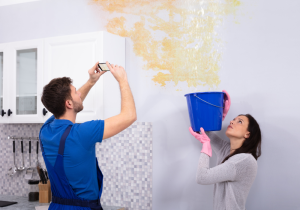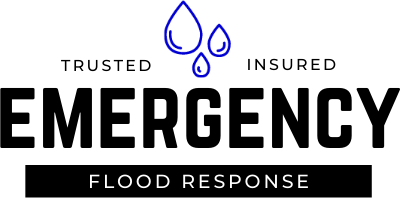Water damage is a homeowner’s nightmare, often lurking silently until it becomes a significant issue. It’s not always the result of a dramatic event like a burst pipe or severe storm. Sometimes, it’s the slow, insidious leaks that cause the most damage. These hidden threats can lead to structural issues, mould growth, and costly repairs if not detected early. Regular home inspections are crucial in safeguarding your home against such damage and maintaining its value.
The Importance of Regular Home Inspections
 Early Signs of Water Damage
Early Signs of Water Damage
Early detection is key to preventing extensive water damage. Regular home inspections allow homeowners to spot signs of trouble before they escalate into significant problems. Look out for:
- Stains on walls or ceilings: These often suggest a leak from above.
- Discoloration or peeling paint: Water can cause paint to lose adhesion.
- Musty odours: This can indicate mould growth, which thrives in damp conditions.
- Increased humidity levels: A humid environment can encourage mould growth and may signal a hidden water issue.
Subtle Signs Homeowners Might Miss
Not all signs of water damage are obvious. Some subtle indicators might escape an untrained eye:
- Warped or buckling floors: This could be due to prolonged exposure to moisture.
- Rust on appliances or pipes: Indicates ongoing water exposure.
- Cracked caulking around sinks and tubs: Can allow water to seep into walls and floors.
- Slow drainage: This may signify a blockage or leak somewhere in the plumbing system.
The Role of Regular Inspections in Damage Prevention
Regular home inspections help identify these early and subtle signs of water damage, allowing for prompt intervention. By catching issues early, homeowners can prevent small problems from turning into costly repairs. Inspections should be scheduled annually and after any significant weather events or noticeable changes in the home.
Common Areas Prone to Water Damage
Bathrooms
Bathrooms are particularly vulnerable to water damage due to their constant exposure to water. Check for:
- Leaky faucets and showerheads
- Cracked tiles or grout
- Water stains on walls or ceilings below the bathroom
- Mold growth around the bathtub, shower, or sink
Kitchens
Kitchens are another high-risk area due to the plumbing and appliances. Look out for:
- Water stains under sinks or around dishwashers
- Warped cabinets or flooring
- Leaky faucets or pipes
Basements
Basements are prone to water damage from ground moisture and flooding. Inspect for:
- Damp spots on walls or floors
- Efflorescence; a white residue left by evaporating water
- Cracks in walls or foundation
- A musty odour indicating mould growth
Roofs
The roof is your home’s first line of defence against weather. Check for:
- Missing or damaged shingles
- Sagging areas, which can indicate structural issues
- Leaks around chimneys, skylights, or vents
- Gutter issues causing improper drainage
The Cost of Ignoring Early Detection
 Financial Implications of Water Damage
Financial Implications of Water Damage
Ignoring early signs of water damage can lead to severe financial repercussions. The longer a leak goes undetected, the more extensive the damage can become, potentially necessitating expensive repairs or even full-scale renovations. According to the Insurance Information Institute, water damage and freezing account for nearly 29% of homeowners’ insurance claims, with the average claim costing around $10,234.
Health Risks Associated with Mold
Water damage often leads to mould growth, posing significant health risks. Mold can cause respiratory issues, allergic reactions, and even more severe health conditions. Young children, the elderly, and those with compromised immune systems are particularly vulnerable. Regular home inspections help mitigate these health risks by addressing water issues before mould has a chance to develop.
How to Conduct a DIY Home Inspection
Step-by-Step Guide on What to Look For
Conducting a DIY home inspection involves a thorough check of your home’s interior and exterior:
- Exterior Inspection:
- Check the roof for damaged or missing shingles.
- Inspect gutters for blockages and ensure proper drainage.
- Look for cracks in the foundation.
- Interior Inspection:
- Examine walls and ceilings for stains or discoloration.
- Check under sinks and around appliances for leaks.
- Inspect the attic and basement for signs of moisture.
Tools That Can Aid in the Inspection Process
Several tools can help make your DIY inspection more effective:
- Moisture meter: Helps detect hidden moisture in walls and floors.
- Flashlight: Essential for inspecting dark areas like attics and basements.
- Camera: Document any issues you find for future reference.
- Notebook: Keep detailed notes of your findings.
When to Call in Professionals
Signs That a Professional Inspection is Necessary
While DIY inspections are valuable, there are times when professional expertise is required:
- Persistent moisture issues: If you notice ongoing dampness or leaks despite repairs.
- Extensive mould growth: Mold remediation experts can ensure safe and thorough removal.
- Structural damage: Cracks in walls or foundations may need professional assessment.
The Benefits of Professional Assessments
Professional inspectors have the experience and tools to detect hidden issues that might be missed in a DIY inspection. They provide comprehensive reports, detailing the extent of any damage and recommendations for repairs. Investing in a professional inspection can save you money in the long run by preventing serious damage.
Regular home inspections are essential for maintaining the health and safety of your home. By identifying early signs of water damage, you can take proactive steps to prevent extensive and costly repairs. Whether through DIY efforts or professional assessments, keeping a vigilant eye on potential issues will ensure your home remains a safe and comfortable environment for you and your family.
Don’t wait for water damage to become a significant problem. Schedule a home inspection today to safeguard your investment and ensure a healthier living space. Share the importance of regular home inspections with friends and family to help them protect their homes too.

